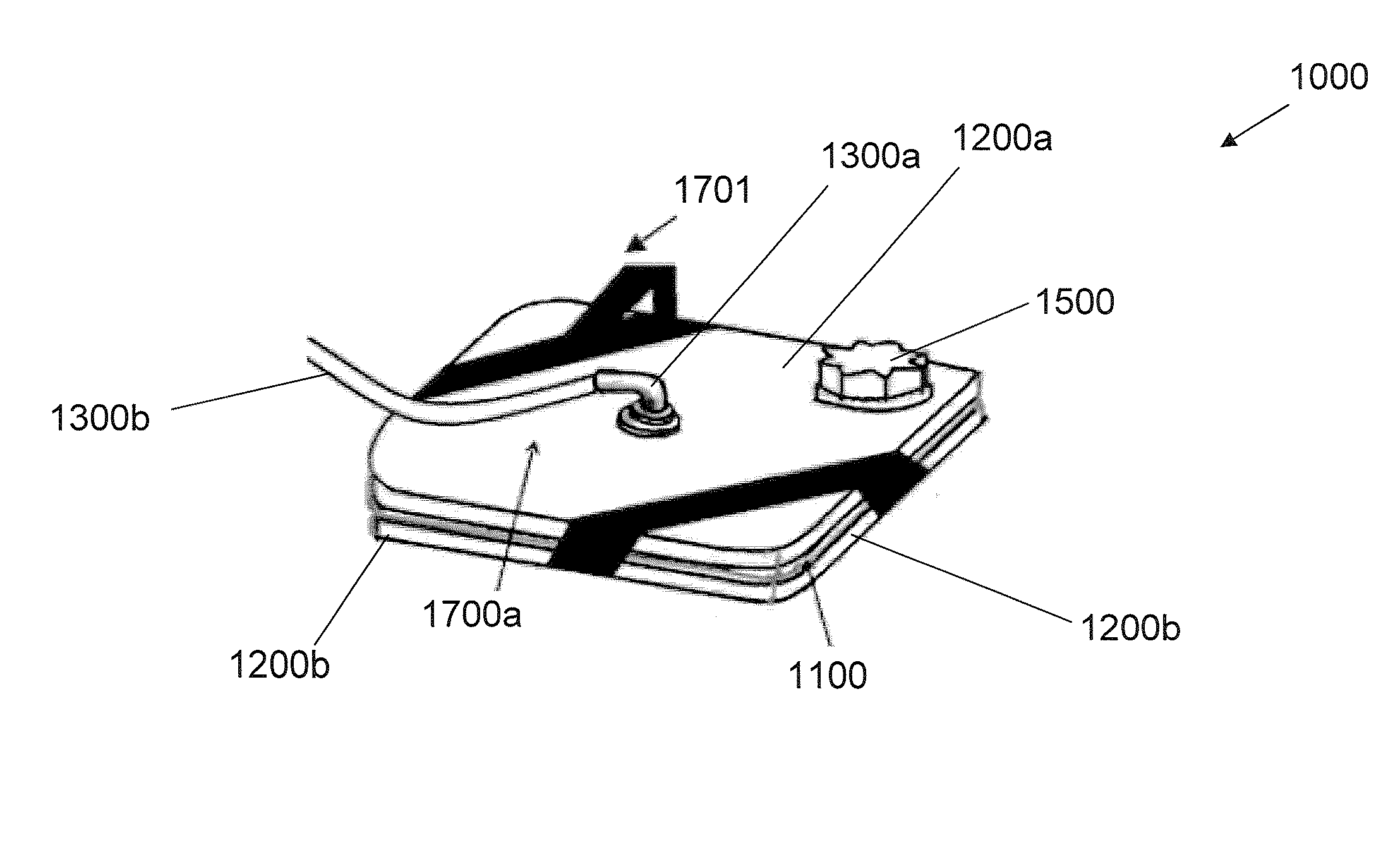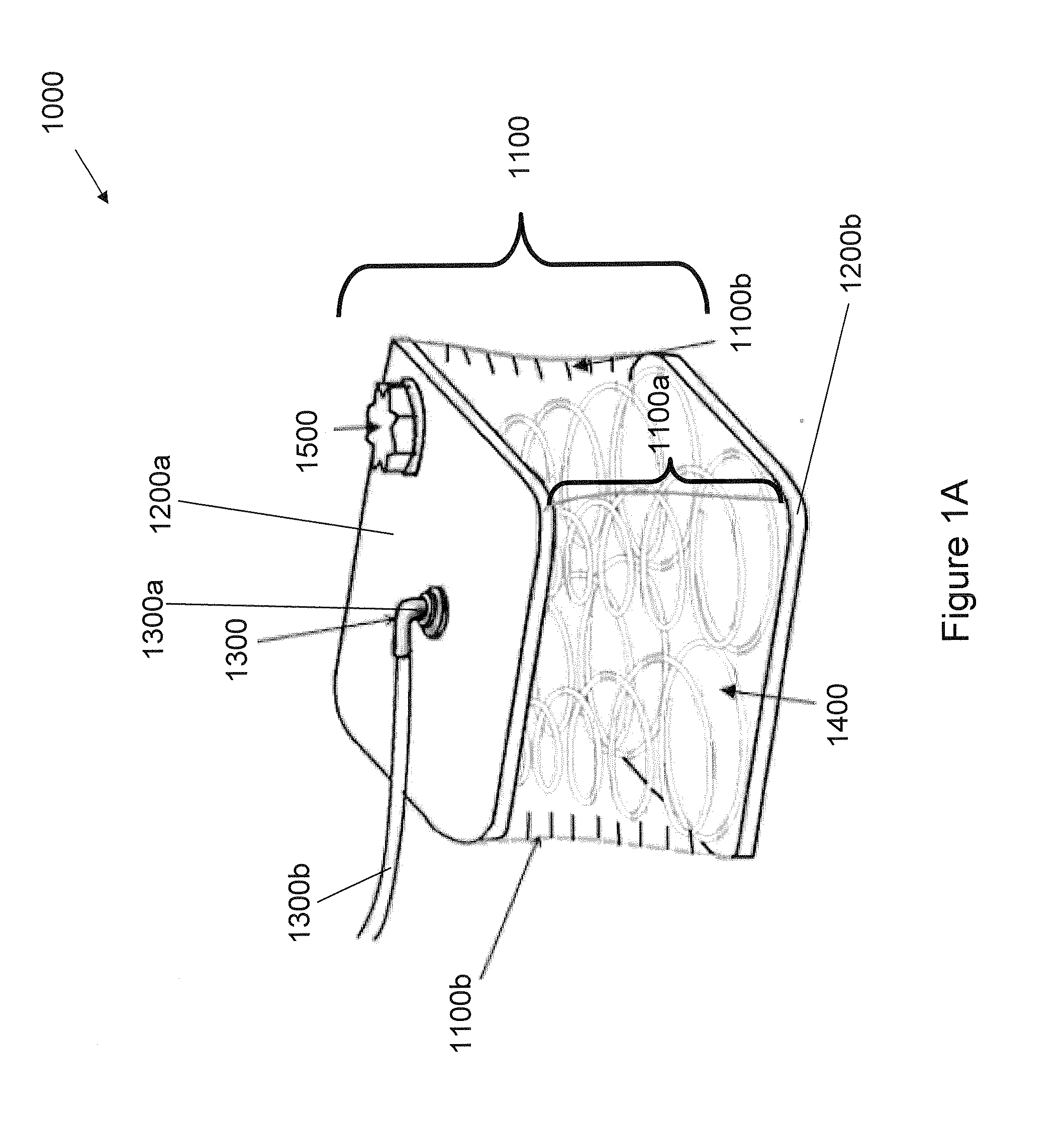In addition, there are many other reasons that fluid extraction is necessary or beneficial, including that excess fluid may obstruct diagnostic probes or other medical analyses from being performed.
Vacuum pumps are common, despite the fact that they can be cumbersome and relatively restricting for active patients.
Active vacuum pumps having mobile power supplies, such as those supplied by batteries, known to be cumbersome and heavy, which can be restrictive for patients in a weakened condition.
However, maintaining a constant vacuum in such bottles, particularly over the course of a fluid extraction which may take hours is known to be rather difficult.
Further, some vacuum bottles are not delivered to the patient or the caregiver in a pre-compressed or
vacuum state.
Therefore, the caregiver or patient must provide the vacuum, which can be awkward or difficult.
In particular, evacuation of the bottles may require additional, cumbersome equipment such as vacuum pumps, etc. and / or the application of physical force.
Such clamps or other mechanical locking mechanisms can be difficult to operate by the users, particularly if the user is a patient suffering from a debilitating illness.
Many devices and systems using clamps, locking mechanisms and traditional restoring force providing members are rather heavy and difficult to move or maneuver.
Often, reservoirs or devices and systems for fluid extraction are not delivered in the compressed states which can be disadvantageous because the un-compressed devices or systems are often bulkier and more difficult to deliver and because the uncompressed devices or systems require evacuation by either the patient or the caregiver.
The former increases delivery and storage costs.
The latter can render the systems or devices difficult to use and implement.
Since it can be difficult to manually compress spring-loaded or other devices, doing so is often too difficult or demanding for the patient.
Most currently available devices and system for medical fluid draining are not necessarily single-use systems and do not prevent either inadvertent or intentional re-use.
Since the medical fluid extraction treatment can, and often is, administered by the patient, there is a temptation and a danger that such devices may be re-used.
Re-using devices for medical fluid extraction poses a variety of potential problems, including, but not limited to, infection resulting from unsanitary conditions created by the accumulation of medical fluid.
Even if the user empties the medical fluid draining system or device and believes the devices is fit for re-use, the user has likely not adequately sterilized or cleaned the device.
Indeed, medical sterilization is often difficult and involves the use of complicated devices.
In other words, medical grade sterilization is typically not easily performed by patients who often lack specialized
medical knowledge or even a rudimentary understanding of such sterilization procedures and protocols.
Further, patients suffering from debilitating illnesses may not be physically capable of performing a thorough sterilization of a complicated fluid extraction device.
Yet, many currently available medical fluid extraction devices and systems, even if designed to be disposable, generally lack a mechanism for preventing re-use of the system.
In general, it is also relatively difficult to assemble complex devices that use springs or restoring force providing members and, yet, also maintain fluid and vacuum-tight seals.
In particular, embedding the restoring force providing members in the device or system and creating a fluid and vacuum-tight seal is often difficult and expensive.
The manufacture of such devices or systems is correspondingly slow and prone to error.
Further, there is a need in the art for a medical fluid extraction or draining device that is configured such that it is not re-
usable after a
single use.
 Login to View More
Login to View More  Login to View More
Login to View More 


